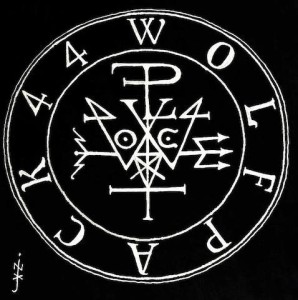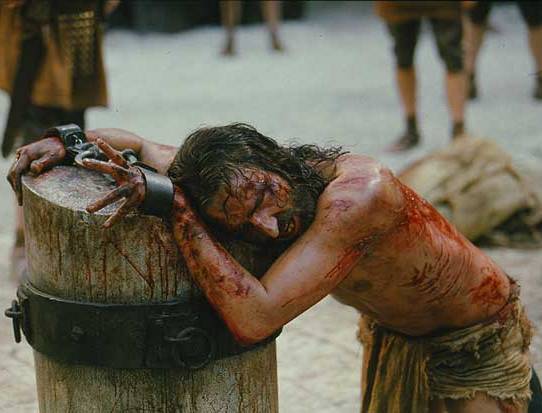
If you want something done right, do it yourself. That also applies to being yourself. Metal has a commodity that the markets and social groups want, which is that it is untamed. Rebellious. Disobedient.
That type of rebellion, if domesticated and made harmless, could mean a lot of money. Your hum-drum product could now be an “edgy lifestyle choice.” Your boring minivans could seem like party wagons. Your corporate brand could get some spiff back in its step and be dangerous again, with a little heavy metal(tm) brand rebellion.
And yet, metal resists. To be used by others for their own purposes is to be conquered, and to be conquered is to be assimilated. For metal that would mean being another flavor of rock, which is the music we turned to metal to escape. In other words, total failure.
Not everyone got the memo. There are a number of bands, both successful and obscure, trying to make a name for themselves by helping with the assimilation. It’s time to mock them sadistically and take vengeance upon their self-image.
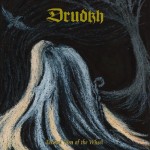 Drudkh – Eternal Turn of the Wheel
Drudkh – Eternal Turn of the Wheel
A fantastic example of how modernity twists the heart of black metal beyond recognition, this album is fruity symphonic rock masquerading as metal through the vocals and guitar tone. Songs start with nothing and go nowhere, though still manage to take up an inordinate amount of time. Entirely derivative of what came before it, there is nothing on this disc to make it distinguishable from the other bands in this style; though at least the groove is catchy.
 Zarach ‘Baal’ Tharagh – Eternal Darkness
Zarach ‘Baal’ Tharagh – Eternal Darkness
With over a hundred releases, you would think this one man band would stumble upon a consistent formula or develop some song writing ability. Wrong. This uses the overblown “recorded through a trashcan on a boombox” aesthetic to fool the unwary into thinking it’s black metal, but it’s just ineptly performed 3 chord garage rock played with marginally faster tempos and over processed vocals that make Xasthur sound like The Three Tenors. Occasionally, early Satyricon/Ulver styled weepy riffs are played, but the inclusion of a Stooges cover confirms this guy should just quit poisoning the world of metal with his toxic, vapid nonsense and play in a pub band.
 Altar of Plagues – Teethed Glory and Injury
Altar of Plagues – Teethed Glory and Injury
“Artistic” performance dancers music video and “moody” image aside, Altar of Plagues attempt legitimacy with metalcore fans/Facebook headbangers by playing the “we heard Deathspell Omega” card. Gone are the weepy and whiny one dimensional Slowdive songs for clinical depressives, and here is The Dillinger Escape Plan attempting to intonate their guitars during a meth binge. All the faux-intellectual interviews about Björk having more artististry than “that stupid death metal nonsense with the blastbeats” doesn’t change this simple fact of life: screaming over random dissonance while stop-start “hitting a trash can” noises are played over it is not “high art.”
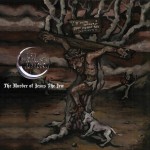 The Meads of Asphodel – The Murder of Jesus the Jew
The Meads of Asphodel – The Murder of Jesus the Jew
Another example of mashing rock together with black metal, this one goes for the carnival of progressive and “space” rock being the focus of songs, together with riffs somewhat reminiscent of black metal if it were made by hearing-impaired children with Down’s Syndrome. Combined with ANGRY MAN vocals and lyrics so profound even your local metalcore band would be in awe, this band truly has it all for the devoted hipster. Functional people need not apply.
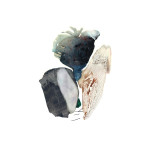 Book of Sand – Destruction, Not Reformation
Book of Sand – Destruction, Not Reformation
Stupid protest rock by indie slam poets who play black metal ironically to get people to donate to AIDS research and “spread awareness” about other “social concerns” while rebelling from the safety of their Minnesota suburb. This is not black metal in the same way bands like Liturgy and Deafheaven aren’t. It’s a bunch of weepy, bittersweet screamo chords strummed really fast in a constant cycle while a violin wanders about aimlessly over the whole dreck to drum up some claim towards being “avant-garde.” Mundane crowd-friendly themes are pushed to the forefront to create a “safe, friendly and social” version of “black metal” that soccer moms with bowlcuts can listen to while on their way to the Deepak Chopra book club meeting in their “food not bombs” sticker adorned SUVs.
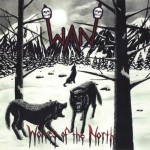 Wan – Wolves of the North
Wan – Wolves of the North
Here we go again. What are they calling it these days anyway? Black n’ roll? This is no different than a poppy Oi punk band occasionally lapsing toward Venom-dom while flaunting Bathory and Hellhammer patches for “forum cred”. “EXTREMEE!!!!!” moments occur in a third rate NWN Blasphemy ripoff moment here or there, but it lapses into what sounds like happy 3-chord rock n roll all over again. This is the “black metal” version of Nirvana’s Bleach LP.
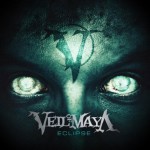 Veil of Maya – Eclipse
Veil of Maya – Eclipse
Is metalcore the final frontier for stupidity? Claiming to be a “progressive and technical death metal”, you can be assured from the band photo of college hipsters that this is not. “Djent” rhythm noodling, tough guy grunting, and a “beetle rattling around in a plastic bin” drum performance are just sideshow elements of what this band truly is: Spawn of Possession playing their favorite moments from Underoath and Thrice songs in double speed. This platter is so weepy and weak despite it’s speed and down tuning that this band might as well drop the whole “metal” act and just become Paramore already.
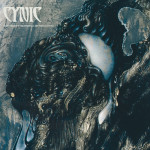 Cynic – Carbon Based Anatomy
Cynic – Carbon Based Anatomy
After seeing how pop music in disguise can be construed as something “unique” after touring with Animals As Leaders and discovering Sumerian Records, Cynic further desecrate their name by hiring the same PR firm that Opeth and Ulver consult with when writing their testosterone sapping abominations. The end result: Coldplay with ADHD. The only element retained from their past are their Holdsworth-esque lead noodlings, but there is no metal to be found here. Even the vocoder was dropped for choir boy whining and multi-tracked prepubescent crying, taking the forefront in songs that emotionally peak in a way that give them the feel of one of those “deep” Adele songs that go viral on Facebook.
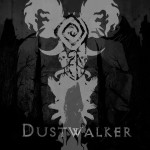 Fen – Dustwalker
Fen – Dustwalker
Wolves in the Throne Room was pretentious and bad, but this… Most of the tracks flounder about lifelessly with no purpose in a manner similar to Slowdive or Spiritualized while an “agonized” vocal track whines in a manner similar to Anathema and then, wait for it, the innovation occurs! Remember when people heard black metal to hear black metal? BORING. Now we have been graced with Fen’s contribution to the world of underground music: throwing out the vocal track to later day Katatonia songs and replacing them with raspy vocals. Like the other shoegaze black metal infiltrators, this band’s extreme riffs sound as heavy as a Type O Negative single and they will stop at nothing into forcing you to give up on life and retire to a frivolous existence of buying Deepak Chopra books and talking about the latest Walking Dead episode while in line at a Starbucks.
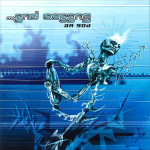 …and Oceans – A.M.G.O.D.
…and Oceans – A.M.G.O.D.
Everyone knows underground metal from Finland is often “quirky”, but …and Oceans have no character or idea to express beyond radio rock song craft with In Flames video game muzak underpinnings. So how do they draw attention? Covering it up with a “strange” band image, stupid name, tons of samples, and electronica interludes. This album makes post-1994 Amorphis look consistent by comparison. All of the “avant-garde” gimmickry this band employed doesn’t change the fact that this is Rob Zombie with swede-AIDS.
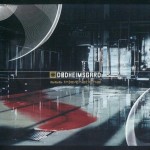 Dødheimsgard – 666 International
Dødheimsgard – 666 International
If this isn’t a joke… Going from Dimmu Borgir “extreme” blast section to a mash up between Voivod and Marilyn Manson before culminating in Queen styled stadium rock in one song, this band is about as “black metal” as Cradle of Filth at this point in their career. Like other sham artists Aborym and Ved Buens Ende, Dødheimsgard seem to think making a melange of the goofiest and most obnoxious sounds in juxtaposition to “harsh” metal moments is an evolutionary step forward. The androgynous band image suggests this band is making an attempt to draw in the Dimmu mall-goth crowd. In a perfect world, these clowns would drop the guitars and rasps out of their music, delete the extraneous elements, and just become VNV Nation or Apoptygma Berserk.
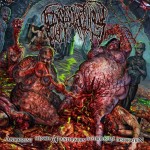 Epicardiectomy – Abhorrent Stench of Posthumous Gastrorectal Desecration
Epicardiectomy – Abhorrent Stench of Posthumous Gastrorectal Desecration
Maybe people were right in criticizing Obituary for wearing jogging shorts and touring with Madball and Agnostic Front during their The End Complete era. What we have here is pure, unadulterated idiocy. Nothing about this is metal at all. Growled out rap verses over chugging rhythms that demonstrate all the redundant noise one can possibly churn out of the first 2 frets on a drop tuned 7-string does not change this from being anything other than being hip-hop on guitars. “Liege of Inveracity has a slam riff” they say… True, but Effigy of the Forgotten didn’t sound like the Wu-Tang Clan either.
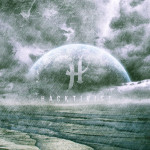 Hacktivist – Hacktivist
Hacktivist – Hacktivist
Djent with rapping vocals. Let that settle in for a moment. A conspiracy theory website lyrics slant for an image of “social awareness” to flaunt “importance”. What does this all mean? The abomination known as Hacktivist. With bands like Periphery and Animals As Leaders infiltrating the metal underground with their “deep” nu-metal for the impressionable, it’s no surprise that someone would attempt to “legitimize” this genre by force feeding the masses what is effectively Limp Bizkit after some guitar lessons. For all the “dissing” aimed toward the New World Order, this album reeks of a product that only modernity and globalization can produce.
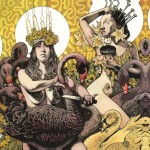 Baroness – Yellow & Green
Baroness – Yellow & Green
It’s no surprise this band got so big. Utilize the hipster rock slant Clutch uses for “street cred” with trucker hat sporting “stoners”, but then add the radio rock of The White Stripes into the mix, and you have even more inoffensive teen rock that sounds like Weezer. This band’s music is so painfully banal that it would be no surprise if one of their tracks has been licensed for use in a 16 and Pregnant episode.
 Mastodon/Feist – Feistodon
Mastodon/Feist – Feistodon
Somewhere out there, someone in a Sonic Youth t-shirt smoking a cigarette wedged between his pinky and ring finger came in his pants. By teaming up with singer-songwriter Feist, Mastodon have released their most hipster pandering product yet. Covering each others songs reveals the true ethos behind these abominations – weepy garage rock. You can throw down-tuned instruments and “loud” drumming at this thing all you want, but this is just Weezer covering an Alanis Morrissette song from both sides. Similar to other flavor of the month sham peddlers Boris, Mastodon is all ironic posturing first, band second.
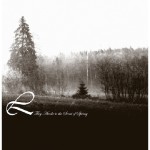 Lustre – They Awoke to the Sound of Spring
Lustre – They Awoke to the Sound of Spring
If you thought nobody would ever bother make an album consisting only of distorted guitar arpeggios and linear synth lines, you would be wrong. How this gets filed under black metal is a mystery, as this album is not even metal to begin with. This is hipster lullaby music, an album perfect for listening after consuming just a few too many frappuccinos. In fact, Starbucks should play this in their advertisements. They’d probably make a fortune.
6 CommentsTags: ...and oceans, altar of plagues, Baroness, Black Metal, book of sand, cynic, death metal, drudkh, Dødheimsgard, epicardiectomy, feist, fen, hacktivist, lustre, mastodon, sadistic metal reviews, the meads of asphodel, veil of maya, wan, zarach 'baal' tharagh
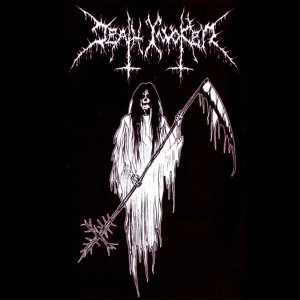 This demo offers a new name to remember for the old school fans. Coming from South America, and having a Sarcófago cover as a hidden track on the Polish version, the inevitable comparison for Death Invoker’s “Demo 2010” will be Sarcófago‘s I.N.R.I..
This demo offers a new name to remember for the old school fans. Coming from South America, and having a Sarcófago cover as a hidden track on the Polish version, the inevitable comparison for Death Invoker’s “Demo 2010” will be Sarcófago‘s I.N.R.I.. 
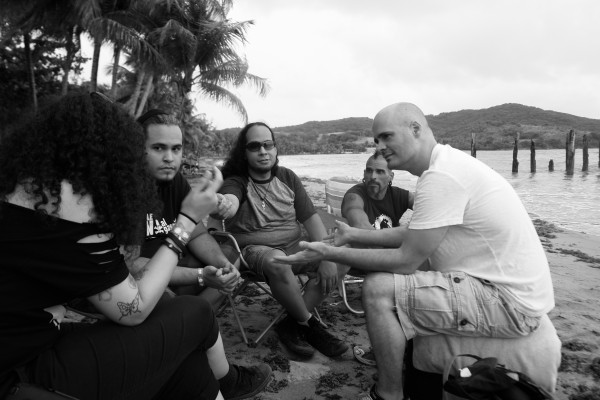
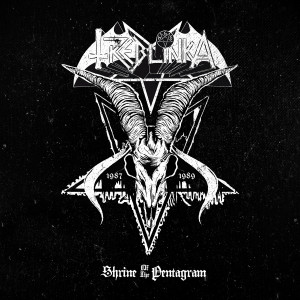
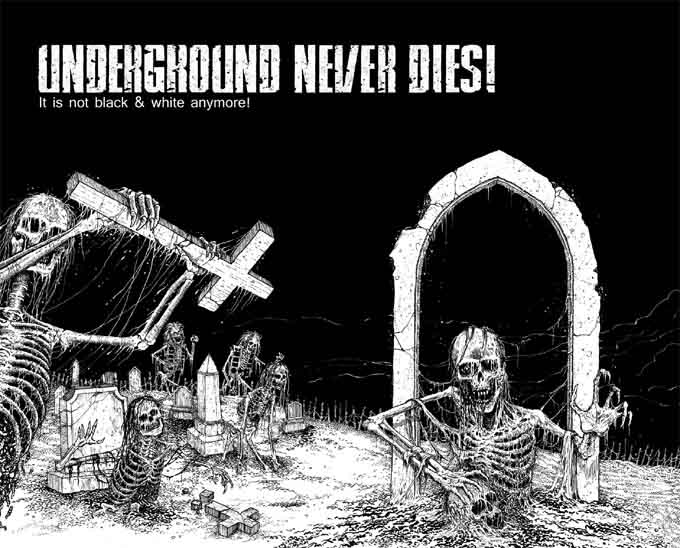
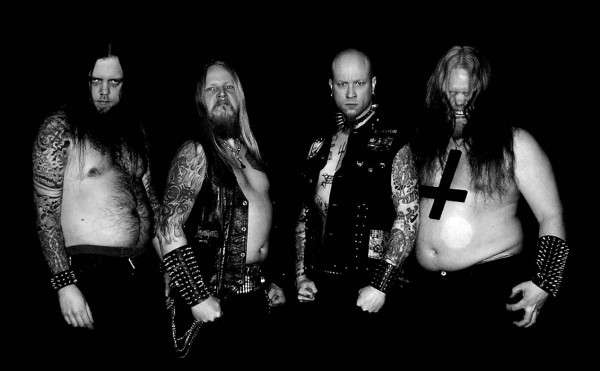
 Born in Hamburg, Germany in 1833, Brahms exhibited virtuosic abilities as a child. Much of his childhood was spent playing around the local scene including dance clubs (by his own account, “brothels”). As a result, some have concluded that Brahms suffered sexual trauma as a child, but there’s no evidence.
Born in Hamburg, Germany in 1833, Brahms exhibited virtuosic abilities as a child. Much of his childhood was spent playing around the local scene including dance clubs (by his own account, “brothels”). As a result, some have concluded that Brahms suffered sexual trauma as a child, but there’s no evidence.
















